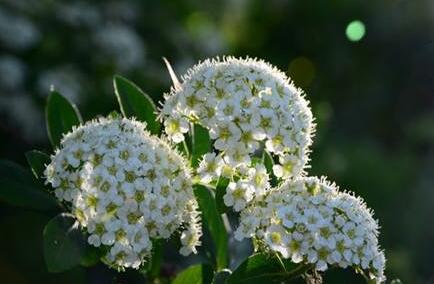What if the perfume lily grows worms? disease and pest control of perfume lilies / picking insects with toothpicks
Perfume lily is the queen of lilies, which is welcomed and loved by the majority of flower friends because of its beautiful appearance. However, if you suffer from diseases and insect pests, the beauty of perfume lilies will be gone forever. At that time, flower friends must be in a hurry! So, what if the perfume lily grows worms? The following are five kinds of perfume lily pest control, follow the editor to learn about it.
Perfume lilies grow worms, spray with medicine

Although common, but the perfume lily culture method is not easy, coupled with the majority of novices, so often improper maintenance of the situation, the result is plant damage, not only grow insects, but also get sick, will seriously affect its ornamental. As for the perfume lily worm how to do, very simple, determine what kind of pest, and then spray to solve, the specific we continue to look at.
II. Disease and pest control of perfume lily
1. Aphids
To say that perfume lilies grow worms, aphids should be the first consideration. Aphids are very small, most of them are about 2 mm. They generally appear in tender leaves and newly grown buds. They feed on the sap in the leaves, causing the leaves of perfume lilies to turn yellow.
Solution: when there are few aphids, you can use toothpicks to kill them; when there are many aphids, flower friends can choose to spray them with 40% dimethoate emulsion 3DO0 or pyrethroid 1000 times in turn.
2. Grub, ground tiger
Among the pests of perfume lilies, in addition to aphids, there are grubs, ground tigers and other underground pests, which usually appear from April to May, gnawing on the roots and stems of perfume lilies, resulting in the death of seedlings.
Solution: this kind of pest is rare indoors and generally occurs in a large number of planted fields, when flower friends can do a good job of ditch cleaning and drainage combined with the rainy season, and spray 0.1% solution of 90% trichlorfon and marathon emulsion. Before spraying, the effect is better when the bamboo stick is used to insert the hole in the nursery bed.
3. Grey mold
In addition to growing insects, perfume lilies can get sick if they are not properly maintained, one of the most common diseases is Botrytis cinerea. The disease often occurs when the temperature is relatively high and the humidity is relatively high. The damage range is relatively wide, and leaves, flowers and stems are all likely to suffer.
Solution: first of all, clean up the parts that have been affected by the disease; then, spray some agents, such as metalaxyl, once every 5 days, twice in a row, that is, you can effectively control the disease. Generally, 7 / 10 will no longer show harmful symptoms.
4. Root rot
In the growth process of perfume lilies, beginners are also easy to encounter plant root rot. Symptoms: first of all, the root of the plant will rot. Then, due to the inability to absorb water and nutrients, the whole plant may die.
Solution: when the above symptoms are found, if the condition is mild, spray 500 times Dyson zinc solution; if the decay is serious, throw it away directly.
5. Blight
In addition to gray mold and root rot, perfume lilies often suffer from blight, which mainly harms the roots. Symptoms: the plant has brown spots; at its worst, it gradually dries up and dies.
Solution: if infected with blight, flower friends should first disinfect the soil, and then spray, such as chlorothalonil and so on.
With regard to the prevention and control of diseases and insect pests of perfume lilies, the editor has introduced this. I believe that if you encounter worms or illness again, you should know how to do it! Generally speaking, perfume lilies are not easy to keep, and if they are not careful, they may cause diseases and insect pests to invade, so we take good care of them. As long as this is the case, the bugs will not come to us. Finally, I wish everyone's perfume lilies can bloom beautiful flowers!
What to do with the growth of insects in musk lilies? control of diseases and insect pests of musk lilies / 2 insect pests 2 diseases
When we cultivate musk lilies, the last thing we want to encounter is diseases and insect pests. This kind of problem is very harmful to the plant, which will not only affect the beauty of the plant type, but also lead to plant death. So what if musk lilies have worms? How to prevent and control diseases and insect pests of musk lilies? Next, the editor will take you to learn about it.
First, musk lily worm how to do, find the reason
If you want to know what to do with the long worm of musk lily, we must first understand what kind of insect is growing, so that we can deal with it pertinently, because the prevention and control methods of each kind of diseases and insect pests are different, and the details are introduced below. Friends who are troubled in this respect can learn about it.
2. Disease and pest control of musk lily (pest)
1. Acaroid mite
The acaroid mite is a pest of the genus acaridae. This pest mainly harms the bulb of musk lily underground, usually first harms the pedicel of the bulb, then gradually expands upward, the injured part becomes black and rotten, and in serious cases, it will cause the death of the whole plant.
Control method: when we deal with the diseases and insect pests of musk lily, we can directly spray it with 6000 times of Uranus EC or 2000 times of 30% moxa Ling wettable powder.
two。 Grub
Grub is the larva of beetle beetle, also known as Bombyx mori and walnut worm. it is a worldwide underground pest with great harm. it often bites off the root of musk lily, causing plant wilting and death.
Prevention and control method: in view of the diseases and insect pests of this musk lily, we can use black light to trap and kill adults, or we can inject 1000 times of phoxim emulsion into the roots of flowers to kill them directly.
3. Disease and pest control of musk lily (disease)
1. Leaf spot disease
Leaf spot is a disease caused by fungi, and its high incidence period is in spring and autumn every year, so we must pay special attention in these two seasons. Leaf spot mainly harms the leaves of musk lily, there will be many prototype disease spots on the leaves, and the disease spots will gradually expand, the shape will also become irregular, it is best to lead to the gradual death of the plant.
Control method: when we control leaf spot disease of musk lily, we can use 80% mancozeb 400-600 times to spray the diseased plant, which is usually sprayed once every 10-15 days, and can be cured once or twice.
two。 Soft rot
Among the diseases and insect pests of musk lily, soft rot is a common disease. During the onset of disease, many water-stained spots will appear on the roots of the plant, and the rhizome will gradually rot and emit a stench with the passage of time. Finally, it gradually rots to death.
Prevention and treatment: in the prevention and control of this disease, we can use 38% cuproloxil diluted by 1000 times to carry out root irrigation treatment, generally once a week, after 2-3 times can be prevented.
What if the glass crabapple grows worms? pest control of glass crabapple / 3 insects and 3 diseases
As a common ornamental plant, the breeding method of glass begonia is not difficult, and it is good-looking, so it is kept at home by many people. But because there are many novice farmers, they often make mistakes in the breeding process, resulting in plant worms getting sick. So, what should we do if the glass crabapple grows worms? In this regard, the editor summarized the common diseases and insect pests of five kinds of glass begonia, let's go and have a look!
First, glass crabapple long worm, spray with medicine
In the growth process of glass crabapple, the plant will inevitably get sick. The main diseases are root rot and stem rot, and the main pests are leaf roll moth, aphids and red spiders, which will affect the growth of glass begonia. Therefore, as soon as it is found, it should be sprayed immediately for prevention and control. As for what kind of medicine should be sprayed, there is a detailed introduction in the pest control of glass begonia. Let's move on to the next step.
2. control methods of diseases and insect pests of glass begonia
1. Leaf roll moth
When it comes to the pests that invade the glass begonia, the most common pest is the leaf roll moth, which is small and its larvae specially bite the new buds, tender leaves and flower buds of the plant, leaving only the epidermis reticulate and making the leaves curl longitudinally. And the leaf roll moth continuously harms the plants in the hidden leaves, slightly inadvertently will affect the growth and flowering of glass begonia.
Control methods: when the leaf roll moth is in a small amount, the rolled leaves can be removed manually and the insect body can be pinched to death; in addition, it is found that the larvae of the leaf roll moth can be sprayed with 1000 times of phoxim at night, and adults can be killed with sugar and vinegar solution (5 parts of sugar, 5 parts of wine and 80 parts of water).
2. Red spider
One of the mites, it is also one of the common pests of glass begonia. The insect often occurs when the ventilation is poor, which will harm the top of the plant, causing the top of the glass begonia to turn reddish brown and have cobwebs, affecting the growth and development of the plant.
Prevention and control method: after the disease and insect are found, it can be treated with enemy killing, or it can be sprayed with 1000 times EC of phenyledalin EC.
3. Aphids
Aphids are the most common pests in indoor potted plants, and they also endanger the health of glass begonia. The insect mainly harms leaves and buds and absorbs a large amount of juice, resulting in a large loss of nutrients and wilting.
Prevention and control methods: when there are few aphids, brush it off with a brush and bury it in the basin soil; when there are many shell insects, you can spray 1000 times of omethoate or 1000 times of dichlorvos, once every 7 seconds and 10 days, and it can be effective if sprayed 3 times in a row.
4. Root rot
One of the most common diseases of glass begonia, its main damage is the rhizome. During the disease, the rhizome of glass crabapple rotted softly, and the plant died when it was serious.
Prevention and treatment: remove the plant from the pot, remove the injured part, then apply fungicide to the wound, dry in a cool place and then replant.
5. Stem rot
A disease harmful to the stem of glass begonia, which is generally spread by water sputtering, and the moisture retention time is long and easy to occur. Symptoms of the disease: the stem or base of the glass crabapple rotted, causing the whole plant to die quickly.
Prevention and treatment methods: if you find the above diseases, you can spray 27% copper noble suspension 600 times; when you are seriously ill, you can also add some Qingkulike or chlorpromazine, spray once every 10 days, 2 to 3 times.
6. Blight
Blight is a disease of many plants, and glass begonia is no exception. The disease mainly damages the stem base of the plant and the leaves near the soil surface. There are many dark spots on the stem base near the soil surface when the disease occurs, and it will spread gradually with the passage of time, and finally lead to the phenomenon of plant wilt.
Control method: in the prevention and control of blight, we can use 1000 times of Likuling wettable powder to irrigate the roots of the diseased plant, usually once every 10-15 days, and then recover after 2-3 times.
With regard to the pest control of glass crabapple, the editor has introduced it here. I believe that if you encounter glass crabapple worms or get sick again, you should know how to do it! If you don't pay attention to it, glass begonia is easy to be invaded by diseases and insect pests, so we must take good care of it. As long as this is the case, bugs will not come to us. Finally, may everyone's glass begonia blossom beautifully.
- Prev

Sweet snowball pest control methods, 2 insect pests 1 disease is the most common / pay attention to soil and environment
Diseases and insect pests may occur in every kind of plant. Although the vitality of fragrant snowball is very tenacious, it will also cause yellow leaves, wilt and death because of the infection of germs and pests.
- Next

What should we do if the golden bract flower grows insects? pest control of golden bract flower / 3 insect pests and 2 diseases
In the process of breeding golden bracts, the last thing we want to encounter is diseases and insect pests and other problems, this kind of problems do great harm to the plant, if not dealt with in time, it will lead to the phenomenon of plant death. So what should we do if the golden bracts grow into worms? What should be done to control diseases and insect pests of Golden Bract Flower?
Related
- Fuxing push coffee new agricultural production and marketing class: lack of small-scale processing plants
- Jujube rice field leisure farm deep ploughing Yilan for five years to create a space for organic food and play
- Nongyu Farm-A trial of organic papaya for brave women with advanced technology
- Four points for attention in the prevention and control of diseases and insect pests of edible fungi
- How to add nutrient solution to Edible Fungi
- Is there any good way to control edible fungus mites?
- Open Inoculation Technology of Edible Fungi
- Is there any clever way to use fertilizer for edible fungus in winter?
- What agents are used to kill the pathogens of edible fungi in the mushroom shed?
- Rapid drying of Edible Fungi

